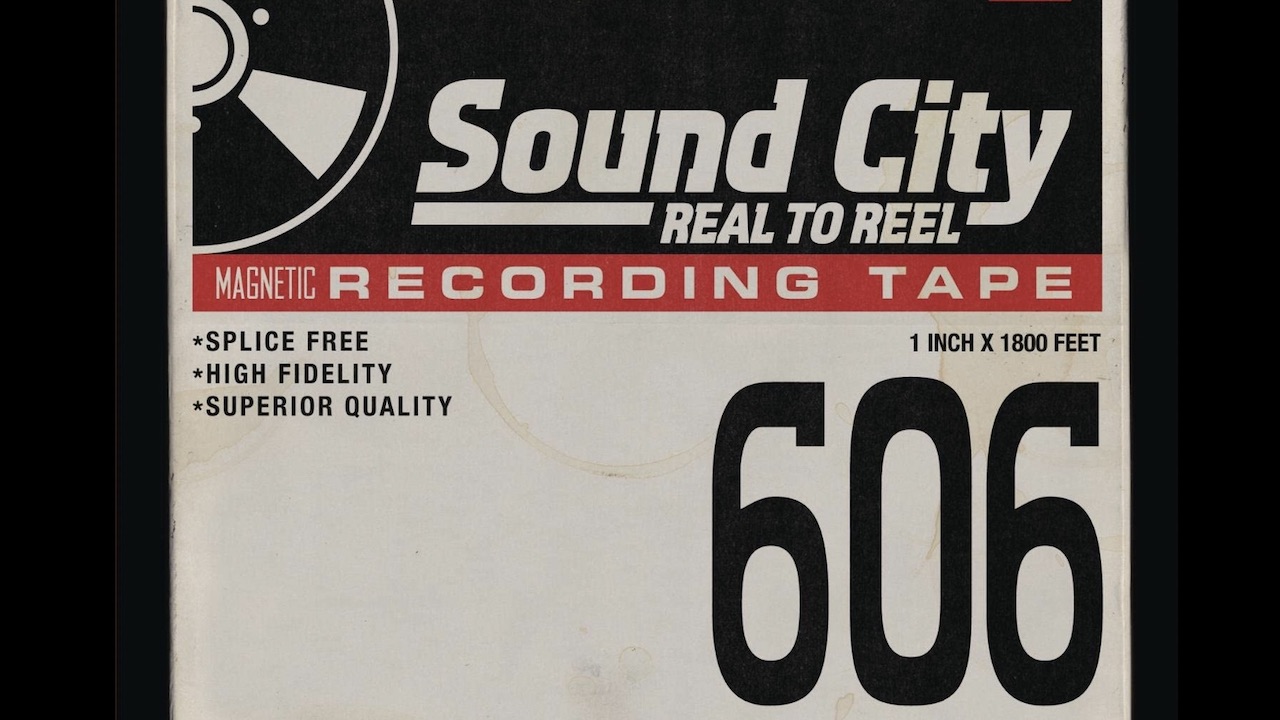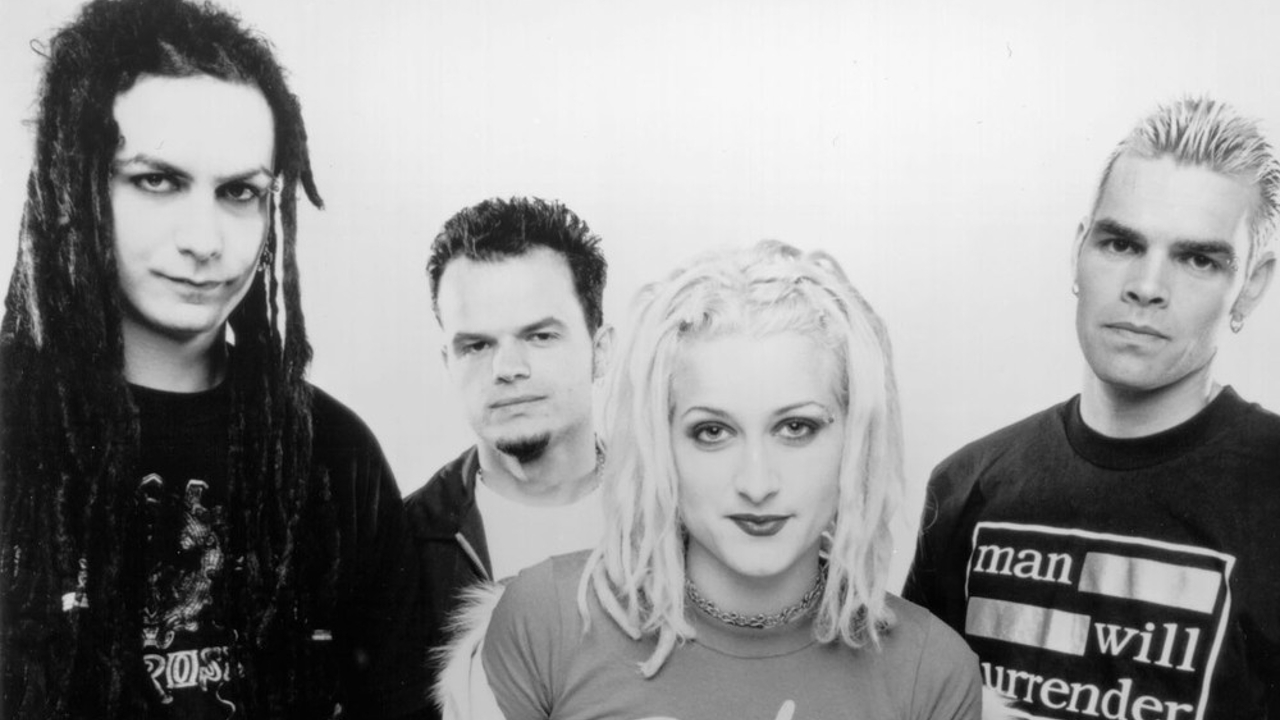The Reels Thing: How Dave Grohl's love letter to a Los Angeles recording studio beautifully captures the magic of music
Released on March 12, 2013, Real To Reel, the soundtrack to Dave Grohl's homage to Sound City Studios is an open-hearted celebration of music and those who make it

Putting aside the obvious great personal tragedies endured, Dave Grohl has won the life lottery many times over. Shedloads of talent, great timing (in every sense), and stadium-sized charisma have helped of course, but he often bears the shit-eating grin of someone acutely aware of how lucky he has been along the way. No more so has that been in evidence than throughout his joyous stint celebrating Sound City Studios a decade ago. He’s had a hand in countless classic records across his storied musical career, but rarely has one captured the giddiness of his fandom as purely as 2013’s Sound City: Real To Reel.
His big mushy love letter to the famous Los Angeles recording studio and its legendary Neve 8028 console was captured beautifully on the record, its accompanying full-length documentary, and the subsequent all-star Sound City Players live shows. Like some kind of benevolent musical billionaire, it was as if Grohl was giving something back to the thing that had given him so much, rekindling the spirit of the place where it all began in earnest for him, and paying homage to an institution and a moment in time with an untouchable legacy.
“To me, Sound City represents some sort of integrity,” he asserts in his big screen directorial debut. “Like a truth, which is very human. Actual people doing this thing that inspired millions and millions of [other] people all over the place to do the same thing.
“I wanted to tell the story of the board, but the conversation became so much bigger. In this age of technology, where you can simulate or manipulate anything, how do we retain that human element? How do we keep music sounding like people [playing it]? That feeling that I got when I was young, ‘I can do that too!’”
Twenty years after he first walked into the studio to track drums on Nirvana’s era defining breakthrough Nevermind, Dave Grohl found himself the new custodian of its mammoth mixing desk, faced with the conundrum of what to do with it.
One of only four ever made by engineering mastermind Rupert Neve, the Van Nuys recording space originally acquired it for the princely sum of $75,175 [approximately £63,000] in the late ‘60s. But having fallen on hard times in a post-Pro Tools world, by 2011 the owners needed to keep the lights on more than they needed the kudos or the memories, and so the Foo Fighters frontman handed over an undisclosed sum for a bona fide piece of musical history.
It was at Sound City where Mick Fleetwood inadvertently discovered Lindsey Buckingham and Stevie Nicks, changing the course of all their lives and the soundtrack of popular music in the process. Neil Young recorded the timeless After The Goldrush there. Tom Petty And The Heartbreakers were regulars following the success of 1979’s Damn The Torpedoes. Alternative music and metal too, saw everyone from Dio, Guns ‘N Roses, Tool, Weezer, Slipknot, Queens Of The Stone Age, and many more pass through its shag carpet-covered doors, capturing career highs across decades. Rage Against The Machine recorded their debut at the facility purely because of Nevermind.
In its heyday, Sound City was not just a space where great things happened. It was a byword for records that shifted the cultural dial. That’s why when the Neve 8028 was transported to Grohl’s Studio 606, he knew it deserved more than to merely gather dust like some collector’s item relic from the past. It demanded to be used.
The latest news, features and interviews direct to your inbox, from the global home of alternative music.
“Every one of these old boards, they all have personality,” he told NPR. “They all have a different life to them, and they all have a different history. It's almost like they have ghosts in them. When we installed the board at my studio, we had to open it up and clean it out. There was like, 40 years of cocaine and fried chicken in that thing!”
So, with Marigolds in the bin and housekeeping duly done, Dave Grohl sent some emails.
“‘Hi. My name's Dave. You and I have something in common: Sound City,’” he wrote. “‘I'm making a documentary about it, and I'd like to ask you a few questions.’ And of the 40 people that I asked to come sit down and talk to me, 40 of them said yes.”
Those who gave an affirmative response read like a who’s who of the studio’s illustrious past. Amongst bandmates and familiar faces like Taylor Hawkins and Pat Smear, were famous friends like Trent Reznor, Josh Homme, and Corey Taylor. But Grohl went further still. Sensing an opportunity to potentially contribute a new entry into the history books, he called on Fleetwood Mac’s Stevie Nicks, Fear’s Lee Ving, Cheap Trick’s Rick Nielsen, and some guy named Paul McCartney, inviting them to collaborate and record as-live through the legendary console.
In the concluding third of the documentary, it’s obvious that Dave Grohl is having the time of his life. The vicious energy of attack Ving brings to his performance on Your Wife Is Calling fizzles infectiously across the screen. When Stevie Nicks nails her haunting delivery on You Can’t Fix This and declares, “I am pretty radical,” no one dares to argue differently. The stunned, we’re-not-worthy split second of silence that follows says it all.
You can virtually feel every fibre of former teen idol Rick Springfield being revitalised by the roaring “stress rock” of The Man That Never Was (“you have some darkness in you, boy!”). The musical synergy captured between Grohl, Homme and Reznor on the final track Mantra makes for a chilling, mesmerising spectacle. Across all 11 songs the highly-charged energy and competitive edge is palpable. There’s no room for phoning it in in this company. There’s nowhere hide when everyone’s this accomplished and bringing their A-game.
But on the two-time Grammy Award-winning Cut Me Some Slack, it goes to a whole new realm of musical fantasy, featuring the surviving members of Nirvana following The Beatles icon’s lead. “Let’s just try it and you tell us what’s wrong,” he tells producer Butch Vig. “Yeah, Butch, tell Paul McCartney what to do,” a sniggering Grohl quips. Suddenly, he’s no longer the superstar musician beloved the world over. In that moment he’s right back to being 11 years old, the same kid who’d thumb through a Beatles songbook learning songs and guitar chords. The look of wonder on his face says it all. Not for the first time, Dave Grohl can’t seem to believe his luck.
“It’s an intensely personal story for me. The reason I'm a musician is because I fell in love with The Beatles,” the Foos man told Classic Rock magazine. “For me to be playing with the person who is responsible for me being here right now was about the most profound, full-circle moment of my entire life.”
Cynics might dismiss Sound City: Real To Reel as a Grohl indulgence, discarding the record as a throwaway vanity project, easily overlooked in the catalogue of his many outstanding releases. But it shouldn’t be. There’s a subtle ascension at play, of Grohl almost becoming great by association and osmosis. You could argue that something similar happened just last summer, when he popped up on the main stage at Glastonbury alongside Bruce Springsteen, helping Paul McCartney ring in his momentous headline performance.
It’s the kind of thing that now feels commonplace for the former Nirvana drummer. All of which started at Sound City. He might have won the lottery of life, but he’s sharing the spoils with everyone, because at heart he’s still a fan, first and foremost. He just gets to rub shoulders with his heroes. And …Real To Reel is a special document of and testament to that fandom, well worth a revisit and reappraisal 10 years on.
Formerly the Senior Editor of Rock Sound magazine and Senior Associate Editor at Kerrang!, Northern Ireland-born David McLaughlin is an award-winning writer and journalist with almost two decades of print and digital experience across regional and national media.
